Home » Foraging » Edible Mushrooms You Can Find in the Pacific Northwest’s Grouse Country
Edible Mushrooms You Can Find in the Pacific Northwest’s Grouse Country
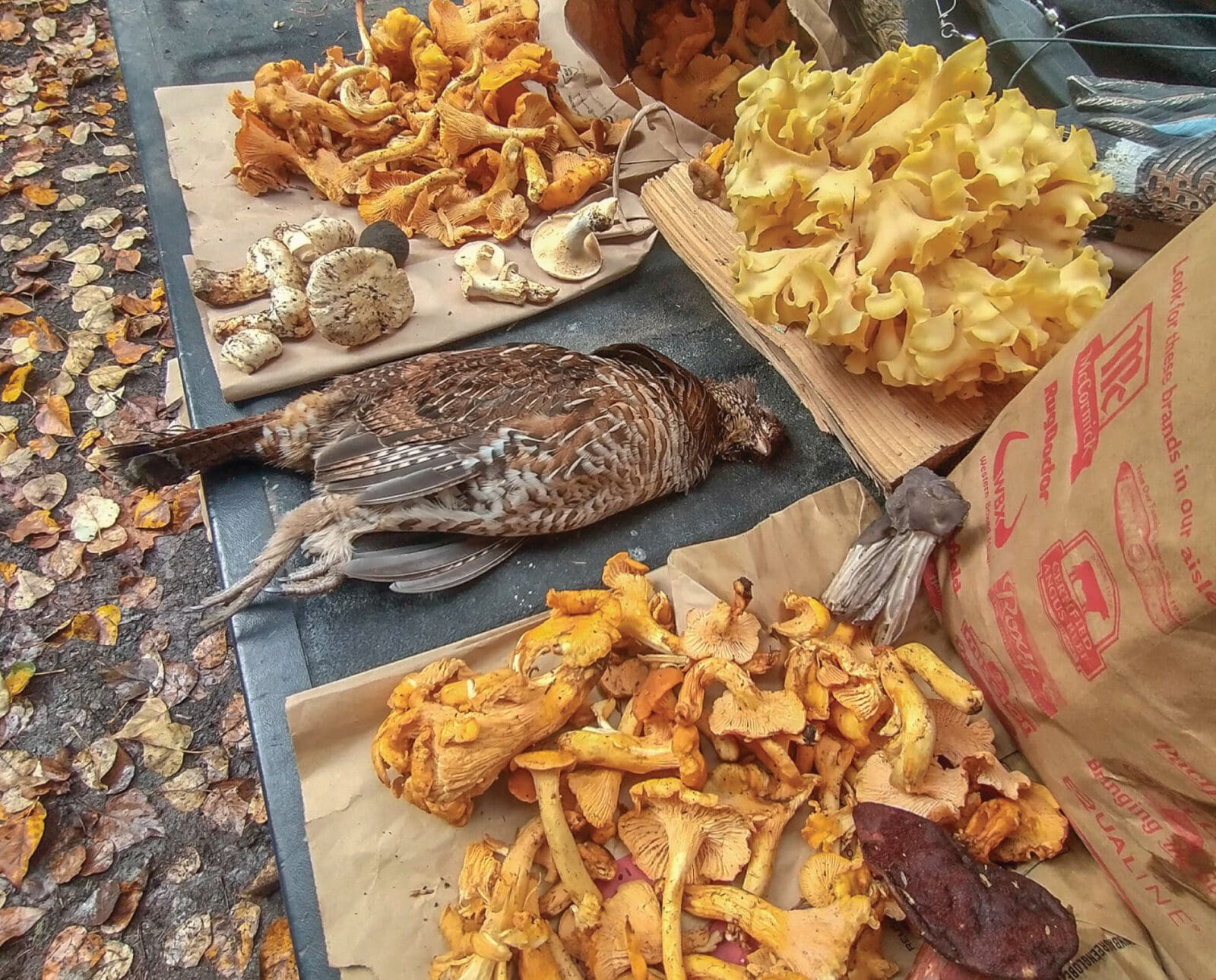
Originally from South Florida, Jennifer Kepler has called the Pacific…
Discover the Pacific Northwest’s hidden treasures: a rich variety of edible mushrooms. Learn where, when, and how to find these culinary delights amidst the region’s iconic misty landscapes.
Fall is the time of year that gives the Pacific Northwest its moody, wet, and misty reputation. It’s also when some of the most coveted edible mushrooms arrive on the scene. Out here, mushrooms are as much a part of the landscape as the moss-covered logs, ferns, and towering old-growth trees. Fungi seem to be everywhere, and it’s easy to overlook them.
Listen to more articles on Apple | Google | Spotify | Audible
One November, a few years ago, I experienced a shift. Mushrooms went from being something I largely ignored to something I actively sought out. I signed up for a foraging group hike in the Gifford Pinchot National Forest on a whim. A light dusting of snow covered the ground. However, we still found chanterelles too big to fit in my palm, a cauliflower mushroom that filled an entire basket, and a Hericium species—things I’d never heard of before and definitely hadn’t eaten. The hike leader, a Washington-based myco-educator, told us how to clean and cook the mushrooms. When I got home and followed her instructions, I could hardly believe how delicious everything tasted. I wanted to go back out to the forest immediately and find more. So began my love of foraging, which eventually led to my interest in hunting game. Every fall since, I have spent countless hours in the woods looking for food and enjoying the forest’s bounty.
In the Pacific Northwest, edible mushrooms can be found year-round. However, fall is a favorite among foragers because many of the tastiest mushrooms fruit during this time, which coincides with grouse season.
Hunting grouse in Oregon and Washington can take you to high-elevation ridgetops, coastal forests, mountain meadows, edges, dense timber stands, boggy lowlands, and everywhere in between. Whether you’re after blues or ruffed grouse, you will likely be traveling through prime mushroom habitat. Depending on the area, you might even bag all three: blue grouse, ruffed grouse, and fungi.
Kayla Sulak, who has been living off the grid since 2016 and hunts in Oregon with her partner, told me, “There have been days where we get ruffed and blues in the exact same area, on the western side of the Cascades, so there’s definitely overlap in some areas.” It’s not uncommon for them to return to their vehicle with a limit of grouse and boxes full of edible mushrooms.
And you can, too, once you know what to look for. These are some of the most common and easier-to-identify edible mushrooms in the Pacific Northwest’s grouse country.
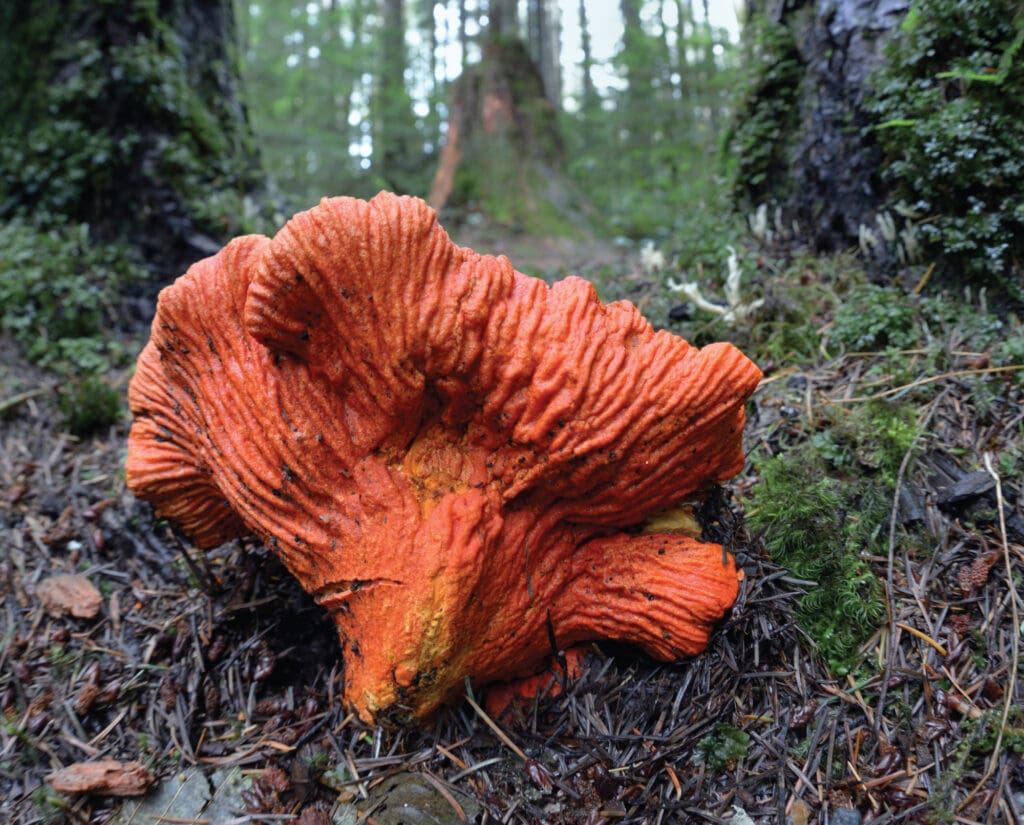
Lobster Mushroom
At first, you might mistake the hunter-orange color for a broken clay on the forest floor. Upon closer examination, you realize it’s a mushroom. Actually, it’s a fungus growing on a fungus. Lobster mushrooms (Hypomyces lactifluorum) parasitize on white russula mushrooms (Russula brevipes). Come the opening day of grouse season, you can find lobster mushrooms in Pacific Northwest forests. They emerge above the duff as early as July and fruit into November. Not only does the flesh of this mushroom resemble lobster meat, but it also smells and tastes like shellfish.
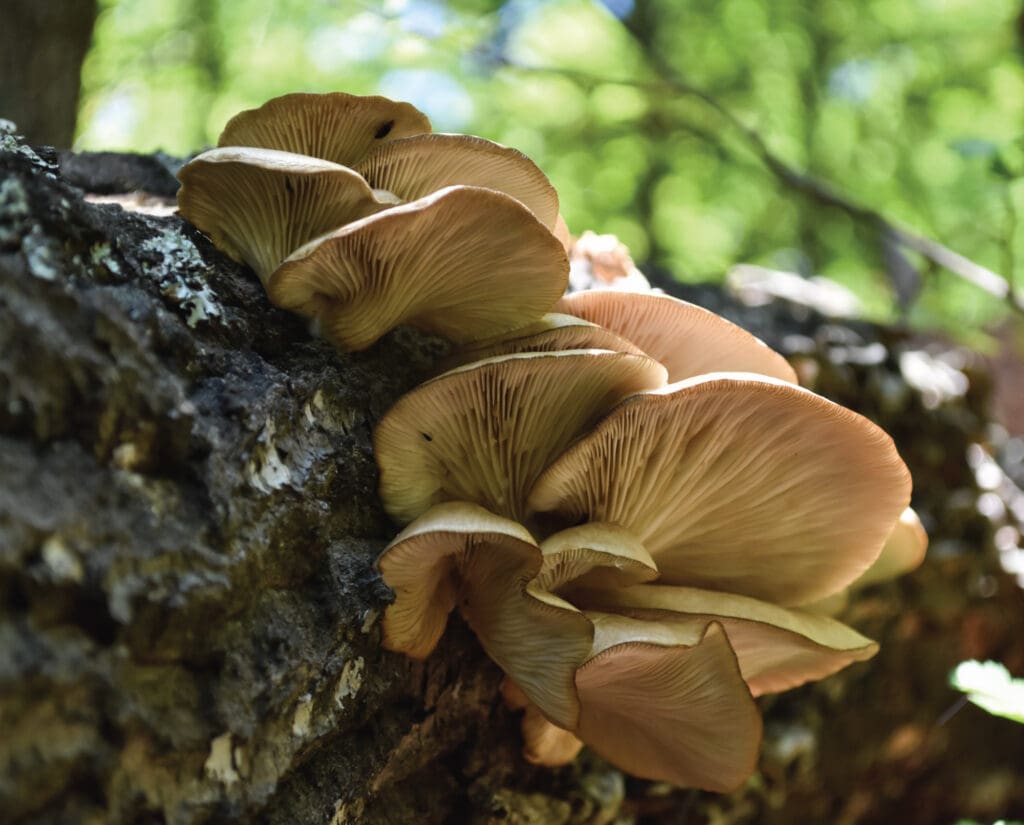
Oyster Mushroom
An Oregon-based hunting and foraging guide, Tony Rousseau, says, “Creek bottoms near clear-cuts and older growth with lots of red alder can be great to push for ruffed grouse early season on hot days.” This is where you can find oyster mushrooms (Pleurotus spp.), which are widespread but tend to prefer riparian areas, where they grow on dead hardwoods. But Tony says the best oysters are found in late fall on cottonwoods (Pleurotus populinus) and ash (Pleurotus ostreatus). Depending on the species, oysters can range in color from white, cream, and pink to gray, blue, and brown. They have an anise-like scent and should be picked while they’re young for the best flavor. You don’t want the caps to open up too much.
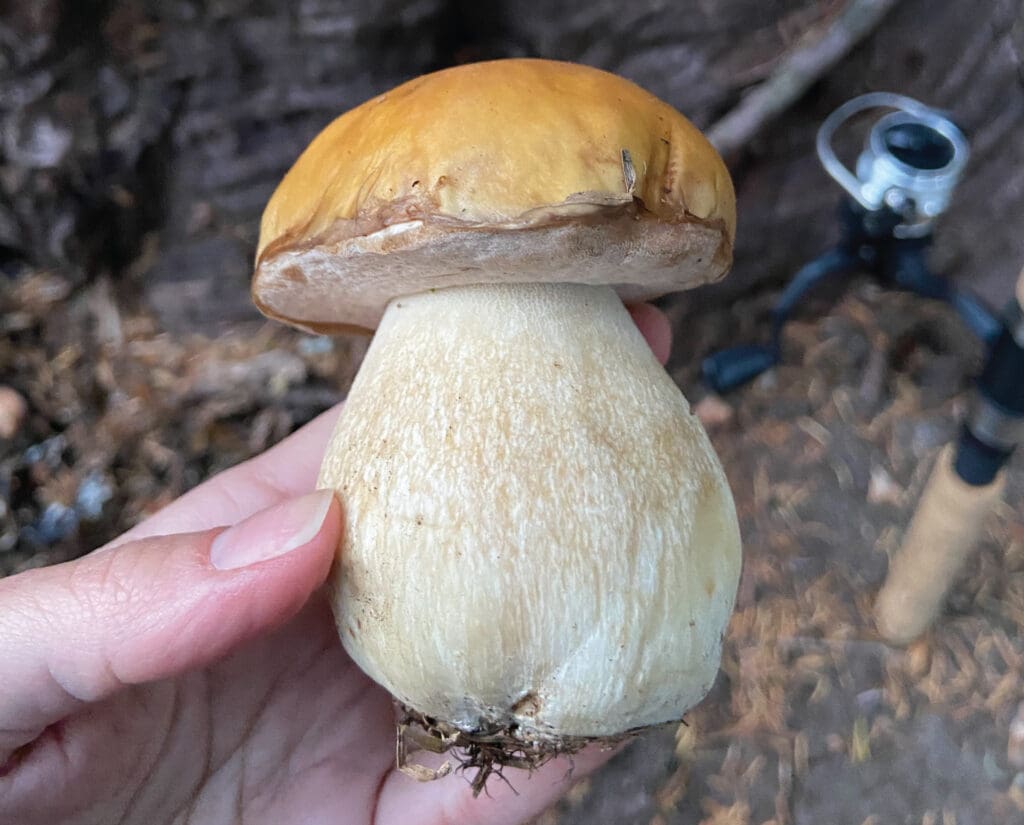
King Bolete
The king bolete (Boletus edulis), also known by its Italian name porcini, or “little pig,” is a delight to find. Keep an eye out for this sweet, nutty mushroom when walking edges and disturbed areas—look for something that resembles a hamburger bun at the grassy edge of a trail or meadow, along road or trail sides, and in forest openings, especially about three weeks after the first good rain. The underside of the cap is a firm, white sponge layer that turns pale yellow to a deep olive as it ages, and the chunky, white stem has reticulation (a mushroom term for displaying a weblike pattern). One way to tell porcinis apart from other boletes, which are plentiful in PNW forests, is that the flesh of the king bolete does not bruise blue.
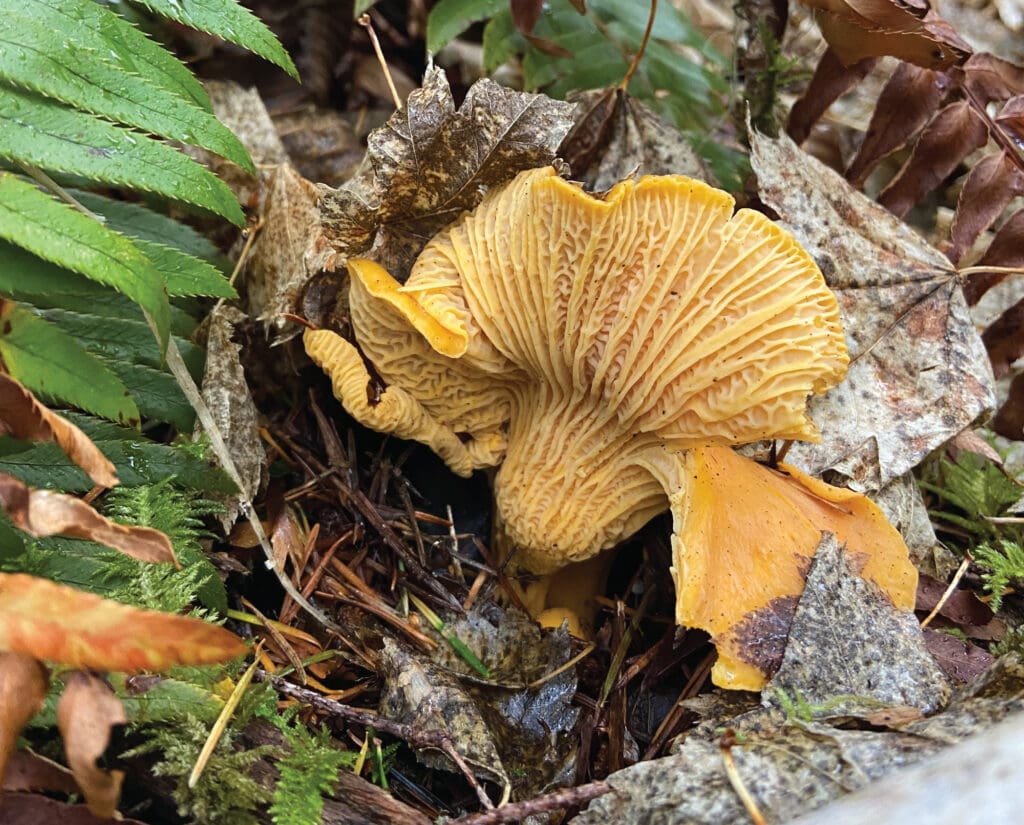
Pacific Golden Chanterelle
Perhaps the most popular of all mushrooms, chanterelles (Cantharellus formosus), are whimsical-looking golden delights sprouting up through the duff and moss. Look for chanties above 1,000 feet elevation, on north-facing hillsides, near Oregon grape, and under western hemlock and second-growth Douglas-fir stands. But really, they can grow in almost any Pacific Northwest forest and at lower elevations, and they rarely grow alone. If you find one, look for more nearby.
They have a vase-like shape, and the edges of their cap become wavy with age. The stem features decurrent gills (meaning they run down the stipe) and cross veins and its flesh can be pulled apart like string cheese. Sniff a chanterelle when you find one—they have an unmistakable sweet, fruity odor that resembles apricots. And be sure you haven’t picked a woolly chanterelle (Turbinellus floccosus), which has fooled many beginner foragers and is known to cause an upset stomach. The golden chanterelle season peaks in November and lasts until the first hard frost.
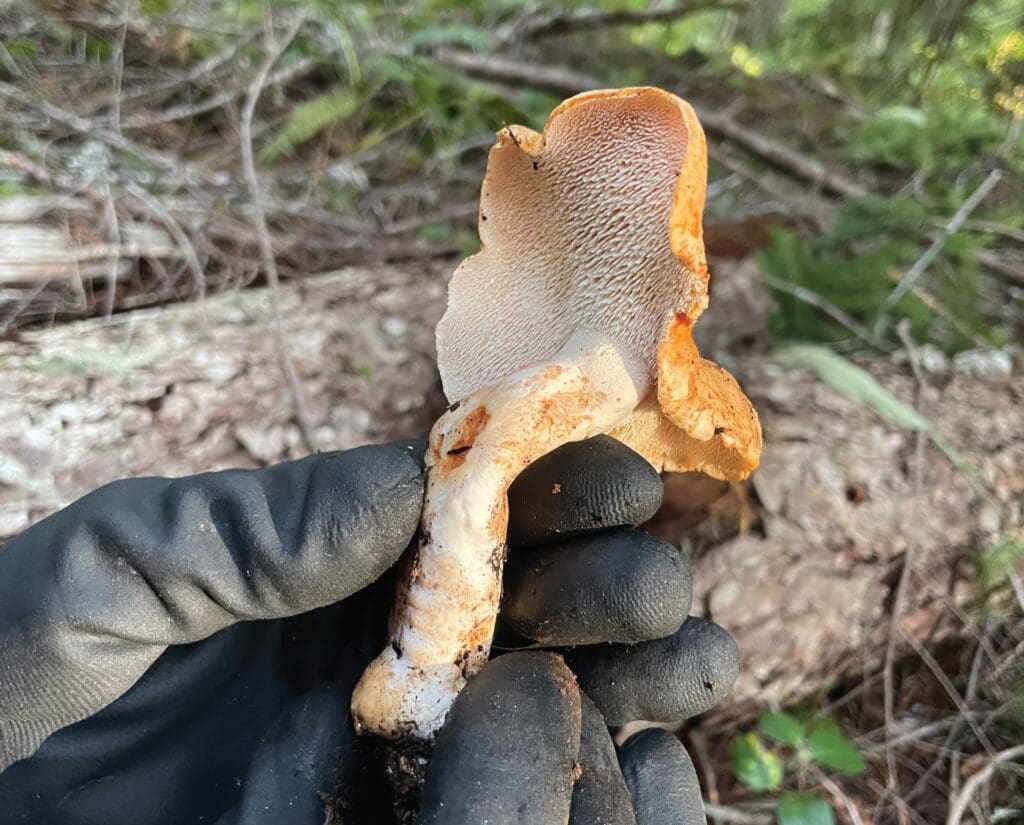
Hedgehog Mushroom
When it seems like chanterelle season is winding down, in come the hedgehog mushrooms (Hydnum spp.). Hedgehogs grow in the same areas as chanterelles and can be found in late fall through winter. They have a pleasant, mild flavor that some say is similar to or even better than chanterelles. The fool-proof way to identify them is to look at the underside of their creamy-beige to pale-orange cap. There, you’ll see white or cream-colored “teeth” that resemble the spiny mammal for which these mushrooms are named.
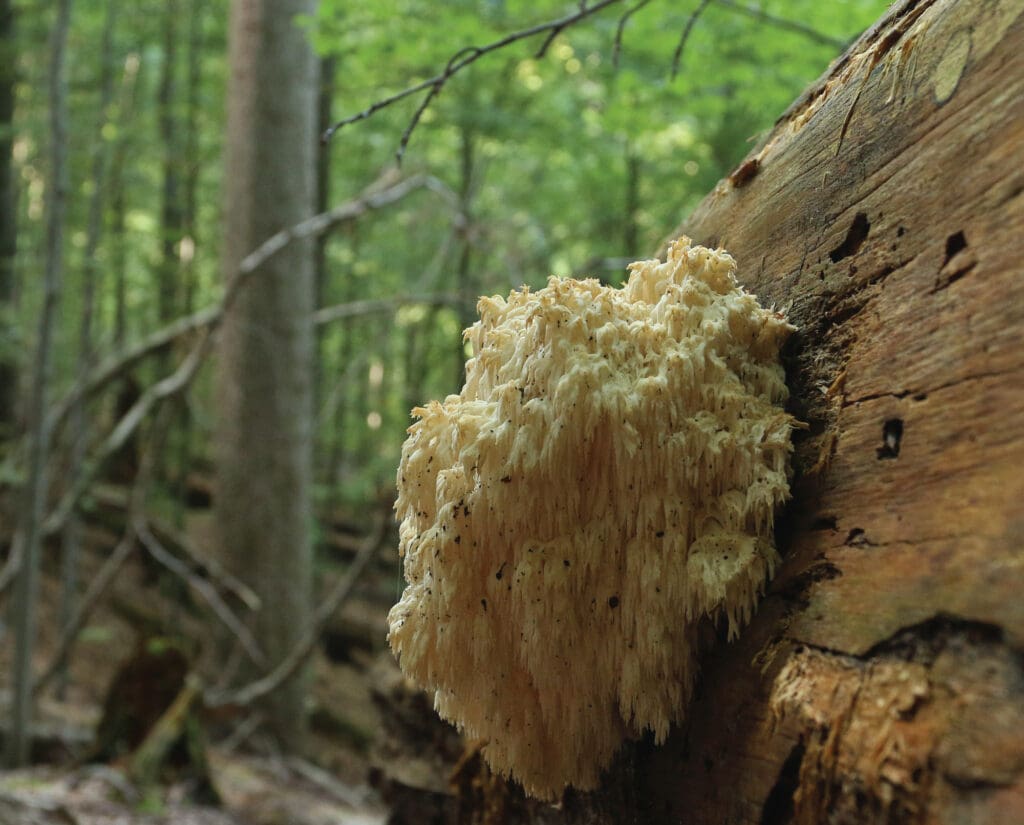
Bear’s Head
Bear’s head (Hericium abietis) is a showstopper of a mushroom with white to pale salmon branches and downward-pointing teeth that look like icicles. These mushrooms can weigh up to several pounds. As a result, they are hard to miss. It’s one of my favorite mushrooms because it tastes like crab meat. It is commonly found in higher-elevation fir and hemlock forests growing on dead logs, stumps, or still-standing snags. Bear’s head fruits late into the fall year after year on the same dead tree, so be sure to drop that pin.
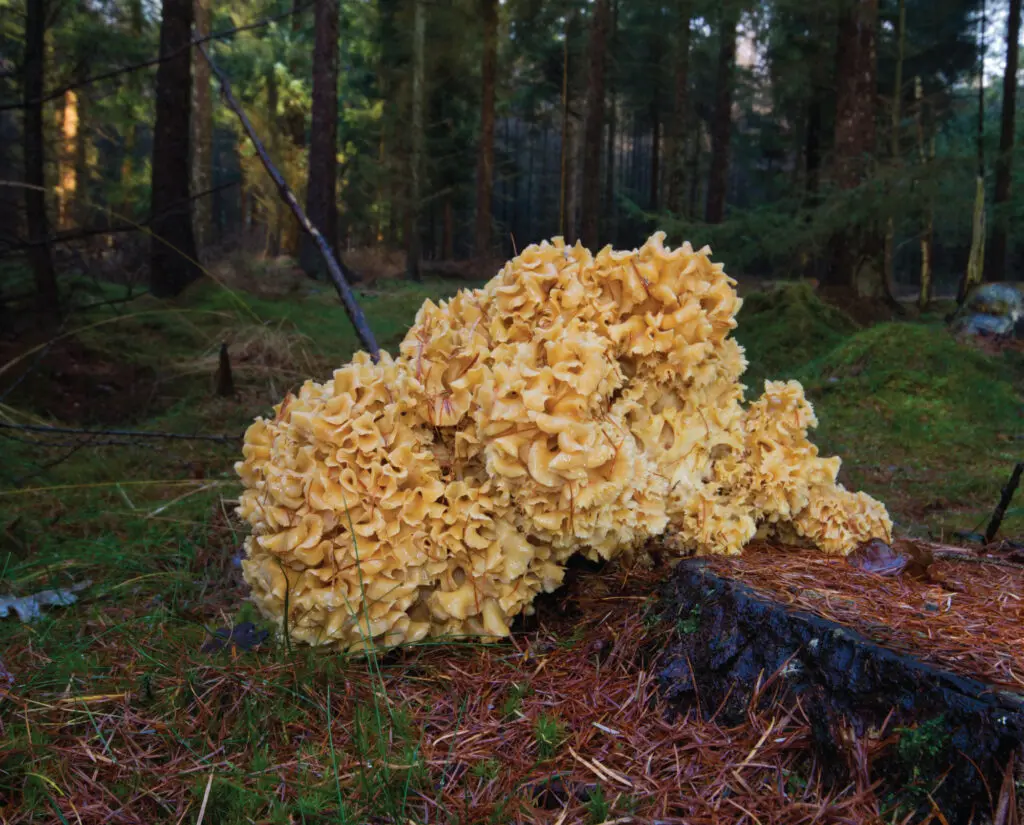
Cauliflower Mushroom
Cauliflower mushroom (Sparassis crispa) might have you raising an eyebrow the first time you spot it. Usually growing at the base of a conifer or stump, this sprawling, brainy-looking mushroom resembles a pile of egg noodles or a head of cauliflower. They vary in color, ranging from creamy white to pale yellow or light brown. It’s most commonly found in old-growth and secondary forests with damaged trees. It has a sweet, nutty, mild flavor that some say resembles morels. Thanks to its hearty texture, it pairs well with meats and can be used as a noodle substitute. Cauliflower shows up in mid-fall to winter and, like bear’s head mushrooms, fruits year after year in the same spot.
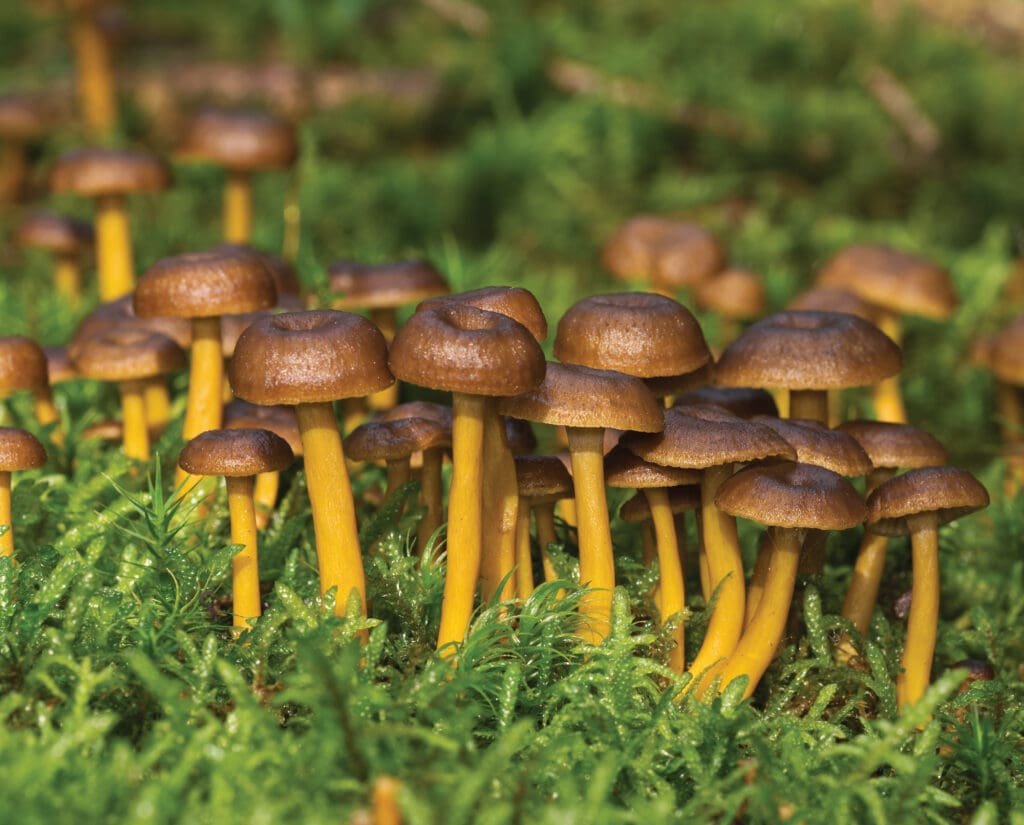
Winter Chanterelle or Yellow Foot
When the temperatures are falling, there are still mushrooms to be found. The winter chanterelle (Craterellus tubaeformis) looks like a golden chanterelle that hasn’t grown up yet. These cute, tasty little mushrooms often grow in groups in mossy soil or on decaying wood in saturated, cool conifer forests or bogs. Look for their small, yellow-brownish caps, which have a depression in the center, and their slender, hollow stipes. They can be found in late fall and winter, often in the same habitat as hedgehog mushrooms and chanterelles.
Grouse hunters are at an advantage when it comes to foraging edible mushrooms. Your hunts may take you to places that haven’t been picked over, and you might discover a honeyhole you can return to year after year. Here’s hoping you find a flush of mushrooms while you’re flushing grouse this season.
Originally from South Florida, Jennifer Kepler has called the Pacific Northwest home for almost a decade. When not editing books, she takes to the woods to hunt, fish, and forage.



